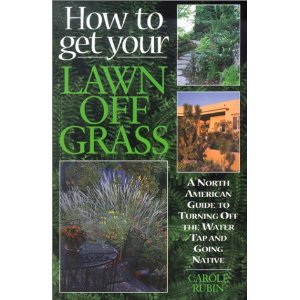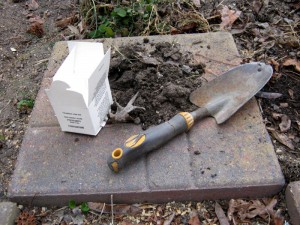Time to Fertilize the Lawn — Or Is It?
by Janet Woody, Librarian, Lewis Ginter Botanical Garden
Those of us with lawns can’t wait for them to green up. Winter has been dreary and we need a good dose of green right about now. It so sad to look at a broad expanse of flattened, brown, dormant grass.
If you’ve never had your soil tested, it’s a good idea to do that before applying any fertilizers to your lawn. Why waste money on unneeded supplements, or the wrong supplements. And we need to think about the consequences of applying fertilizers to our lawns. It’s hard to believe that what we apply to our lawns and gardens ends up in the Chesapeake Bay, but the Richmond area is part of the drainage basin for the largest estuary in the United States.
Speaking of our Bay, some good news came from our General Assembly recently, where both houses have passed legislation barring the sale of fertilizers containing phosphorus. The James River News Hub reports on this legislation in more detail, if you want to read the whole article. The sponsors of the law recognize the long-term savings that will come from a cleaner bay: “Once effective in 2013, the law could reduce phosphorus pollution running off into the Chesapeake Bay from Virginia by at least 230,000 pounds per year, or 22 percent of Virginia’s phosphorus reduction goal by 2017. That could save localities millions of dollars by reducing their need to install expensive stormwater runoff treatment systems.”
And, as we’ve mentioned before, the Garden cares a great deal about the health of the water in the bay, which is why we’ve decided to create a Water Management Demonstration Garden and are seeking funding through the Rain Bird Intelligent Use of Water Awards and other sources. If you’d like to support us, you can still vote daily through March 22).
Back to my sad, dormant lawn. I decided to have my soil tested for the first time. I’ve lived in my house for 23 years and it’ time for me to know what’s going on in my soil. I don’t routinely use fertilizers or chemicals, but I had such an enormous crop of weeds last summer that I’ve decided to work a little harder to cultivate more grass and fewer weeds. But before I can add fertilizers or amendments, I should know what I’ve got. Really, I’m tempted to get rid of the whole darned lawn and create a natural landscape using native plants. But I can’t take such a radical step. I’m just too chicken.
A new book in the library might help me: How to get your lawn off grass : a North American guide to turning off the water tap and going native by Carole Rubin. Now this is depressing: according to Rubin, conventional turf-grass lawns and ornamental exotic gardens are responsible for consuming 60 percent of daily domestic drinking water used in North America. And only one-half of 1 percent of water on the planet is drinkable. Now I’m going to feel more guilty every time I water my grass. But wonder if I turn it into a native garden and it looks awful? Then what? 
I’d like to hear from anyone out there whose gotten rid of your turfgrass lawn and planted something that’s low maintenance, attractive in 4 seasons, and doesn’t hurt the planet. Maybe there’s a movement in Richmond to go native. Let’s hear about it.
In the meantime, back to my soil test. While I wait for the results, I can dream about turning my front yard into a butterfly garden.
